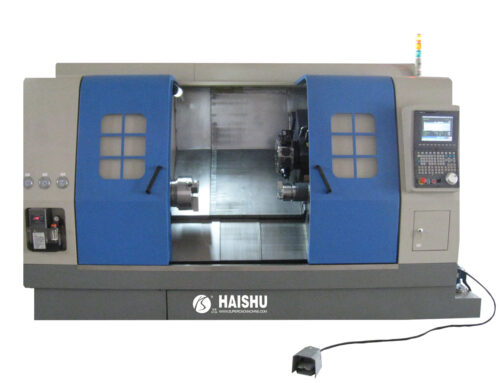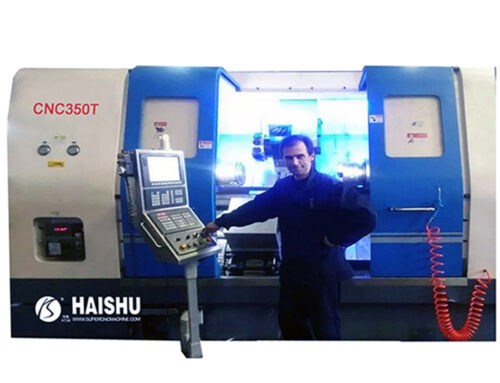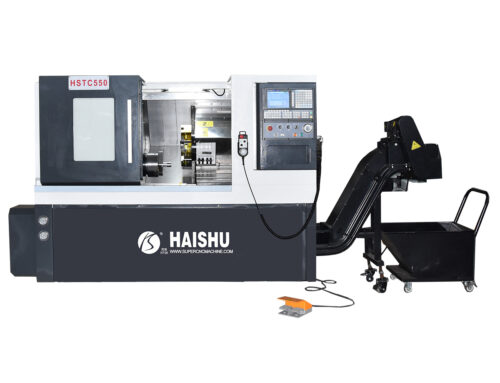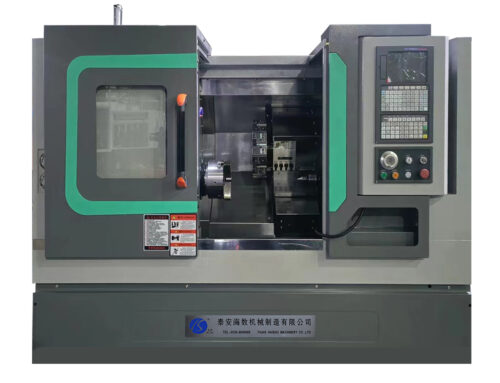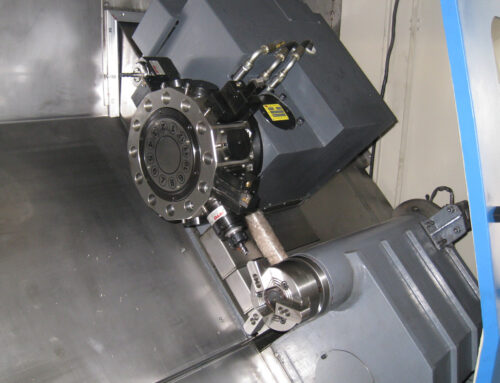CNC Turret Lathe industry, which is the cornerstone of the modern industry, is a key issue that cannot be bypassed in the course of industrial economic development. Due to its inherent insufficiency, the Chinese machine tool industry has been falling behind the mainstream foreign standards in the development of mid-to-high-end machine tool projects. In the process.
China’s CNC turret lathe is still relatively backward. China’s CNC machine tool market is huge. Compared with foreign products, China’s gap is mainly in the high-speed, high-efficiency and precision of machine tools. China is in the middle of industrialization, that is, gradually opening from solving shortages to building an economically strong country and moving away from poverty. To become rich, coal, automobile, steel, real estate, building materials, machinery, electronics, chemical and other high-growth industries based on heavy industry have a strong momentum of development, which constitutes a huge demand for the machine tool market, especially CNC turret lathe.
China’s machine tool industry is facing four major constraints in accelerating its transformation. China’s CNC lathe machine technology can only achieve a five-axis linkage at most, and according to relevant sources, this five-axis is still a show component, almost all of the five-axis and above are imported, and the multi-point linkage technology is also very foreign to the technical level. Big gap.
Intensified international competition in the domestic market: As the market for mid- and low-grade CNC turret lathe shrinks and excess production capacity, coupled with the influx of foreign products at low prices, market competition will further intensify. As high-end products have been relying on imports for a long time, domestic products are facing the severe challenges of international competition.
The technology-leading strategy is shifting to a customer-centric strategy: The economic crisis often catalyzes large-scale industrial upgrades and enterprise transformations, and the machine tool industry implements manufacturing service. The core lies in being customer-centric and actively providing customers with the needs of Personalized services. Therefore, it has become a trend to shift from simply selling products to providing total solutions and from technology-centric to customer-centric.


There is a large contrast between Chinese products and the Chinese market demand, and the product structure needs to be adjusted quickly: Although the Chinese machine tool industry has maintained rapid and continuous development for many years, the phenomenon of irrational industrial and product structures still exists. The entire industry is large but not strong, and there are still a large number of high-end products relied on imports. Although the domestic market share of domestic machine tools has increased to a certain extent, the share of high-end CNC turret lathe and core functional components in the domestic market is still very low, and the industry has a huge potential to replace imports.
The technological innovation model of enterprises needs to be improved: As the status, industrialization level and brand influence of Chinese machine tool enterprises are gradually increasing, to become an industrial power, their technology can no longer depend on others. In the past, China has followed a path from imitation to introduction. From now on, it must follow the path of independent innovation. Enterprise technology encountered a new blockade, and the establishment of an independent, new and strategic industry-university-research innovation model was the only way to support the technical source of product structure adjustment.
China’s CNC machine tool industry will continue the momentum of structural adjustment and continue to occupy larger markets with new products and new highlights. CNC cutting machine tools can be divided into flame cutting and plasma cutting according to cutting methods. With the continuous improvement of the needs of downstream industries, greater demands and higher requirements have been placed on CNC machine tool accessories.
Development in the Northeast is not fast, and development in other places is also relatively slow. The third is to achieve structural adjustment and promote transformation. Experts believe that in the face of the financial crisis, enterprises should continue to adjust their structures, improve quality, increase varieties, and promote industrial upgrading. Coupled with the strengthening of management and reduction of costs, corporate benefits have improved significantly. The decorative development trend of CNC cutting machine tools is evident. CNC cutting machine tools are more focused on mechanical performance, easy operation, economical price, stable processing accuracy and so on. The processing of metal materials is increasingly required to be popularized and batched. In addition to the above-mentioned functionality, CNC cutting machine tools must have the applicability of multiple cutting methods.
To improve their strength and expand the international market faster, domestic CNC machine tool companies will take various measures to accelerate integration with foreign companies to improve product quality and competitiveness. While continuing to explore the markets of the United States, Japan, and other countries, it has also blossomed in Southeast Asia, the Middle East, Russia, Europe, and Africa. It is understood that the current operation of the metal cutting CNC machine tool industry has the following characteristics: First, it is difficult for exporting enterprises. From the perspective of the enterprises above the designated size, the domestically-sold brand-based enterprises have a better momentum of development. The development of SMEs without brands is more difficult. Second, the development of various regions is not balanced. Zhejiang, Shandong, Hebei, Beijing, and Sichuan have developed rapidly, and Guangdong’s private enterprises have also developed rapidly.
Most companies in the CNC cutting machine tool industry rely on reducing the price of products to obtain the market. The consequences are low product prices, low added value, and low profits. Enterprises do not have sufficient funds for sustainable development. With the development of the industry and the upgrading of competition, it is the best choice for the long-term development of the company to improve the technical content of the product, own independent patents, designs, and focus on brand building and marketing.
China’s machine tool industry has achieved sustained super-high-speed development in the past few years. Until the first half of 2011, demand was still very strong, but from the second half of the year, demand growth has slowed significantly, new orders have fallen sharply, and economic benefits have gradually increased. Increasingly severe, profit margins continued to decline.
During the “Twelfth Five-Year Plan” period, the state implemented an active fiscal policy and a prudent monetary policy. With the advancement of science and technology, product upgrades, and continuous advancement of key national projects and local investment projects, the level of demand for machine tool products in various industries in the national economy It will further increase the demand for high-level machine tools for national defense modernization, the market demand will develop to a higher level, and the new round of market competition will become more intense.
Due to the sluggish industry boom and the decline in demand for machine tools from downstream manufacturing enterprises, China’s machine tool industry has been in the doldrums. Upgrading and transformation have become the keyword of the industry, and economical CNC turret lathe has become one of the key points for revitalizing the equipment manufacturing industry.


China’s foundry machine tool industry has made certain achievements, but its development still faces many restrictive problems, and technological innovation has always been a flaw in the domestic foundry machine tool industry. Compared with foreign foundry machine tool industries, China’s foundry machine tool industry is significantly behind at the level of manufacturing technology, which makes it significantly deficient in the technical level and operating speed of core operating components, product accuracy retention, and machine tool reliability…
China’s foundry machine tool companies lack the awareness and ability of independent innovation and basic theoretical research, which restricts the development of China’s foundry machine tool technology. To change this situation, it is necessary to deeply study the characteristics and requirements of the product technology of the user industry and to develop in combination with process characteristics The development of high-level processing equipment, at the same time, we must also pay attention to the research of basic theoretical work so that China’s casting machine tool industry can have a better development in the near future. A series of policies promulgated by the state, vigorously building emerging enterprises and high-tech enterprises, seized this opportunity and introduced a series of policies such as “adjustment and revitalization” and “independent innovation” to upgrade enterprise machine tool technology and strictly guarantee products. Quality provides a good environment and market for accelerating the development of the casting machine tool industry.
As a national basic and strategic industry, the machine tool industry has clearly defined the independent innovation strategy as the most important component in the “Twelfth Five-Year Plan”, emphasizing the need to support and lead the development of the industry with technological innovation projects. The development of China’s machine tool industry must be based on independent innovation, through independent research and development of original innovation, the introduction of technology to digest and absorb and re-innovate, integration of existing technological innovation, etc., to achieve key technological breakthroughs and industrial upgrading. Construct and improve a technology innovation system that takes the enterprise as the mainstay, is market-oriented, and combines production, education, and research; insists on increasing investment in research and development; strengthens research on key technologies and common technologies, and strives to make breakthroughs in basic and common technology research To improve product development technology.
